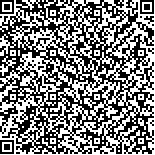陶熔,王静,李海芹,夏令杰.丁丙诺啡联合关节松动术治疗肩周炎的疗效观察[J].中华物理医学与康复杂志,2017,39(2):137-141
扫码阅读全文

|
| 丁丙诺啡联合关节松动术治疗肩周炎的疗效观察 |
|
| |
| DOI: |
| 中文关键词: |
| 英文关键词: Buprenorphine Arthrolysis Non-steroidal anti-inflammatory drugs Periarthritis Shoulder |
| 基金项目: |
|
| 摘要点击次数: 2305 |
| 全文下载次数: 3336 |
| 中文摘要: |
| 目的观察丁丙诺啡联合关节松动术治疗肩周炎的临床疗效。 方法采用随机数字表法将103例肩周炎患者分为A、B、C共3组。A组患者给予丁丙诺啡及关节松动术联合治疗,B组患者给予非甾体抗炎镇痛药洛索洛芬钠及关节松动术治疗,C组患者则单纯给予关节松动术治疗。于治疗1周、3周及治疗后3个月时观察3组患者疼痛、Constant-Murley肩关节评分(CMS)以及肩关节活动度变化,并比较3组患者治疗过程中关节松动术手法力度间差异。 结果治疗后3组患者疼痛评分、CMS评分以及肩关节活动度均较治疗前明显改善(均P<0.05)。进一步分析发现,在治疗1周时A组患者疼痛评分[(2.8±1.0)分]较B组及C组[分别为(3.8±1.0)分和(4.5±1.3)分]均显著降低,A组患者CMS评分[(60.1±10.7)分]较B组及C组[分别为(48.8±11.0)分和(44.9±9.7)分]均显著提高(均P<0.05),A组患者肩关节后伸、90°外旋位外展、内旋、外旋角度[分别为(41.3±7.8)°,(68.8±12.4)°,(38.5±4.5)°和(36.6±5.9)°]均显著优于B组[分别为(34.2±4.5)°,(62.0±11.7)°,(34.0±3.5)°和(32.9±5.1)°]及C组水平[分别为(32.4±7.2)°,(60.7±12.9)°,(31.6±6.9)°和(32.4±5.6)°],且上述差异一直持续到治疗后3个月时。另外在治疗1周时发现A组患者行关节松动术的力度[(2.5±0.5)级]均显著高于B组及C组水平[分别为(1.7±0.6)级和(1.3±0.5)级],并且这种差异一直持续到治疗后3个月时。 结论丁丙诺啡联合关节松动术治疗肩周炎的临床疗效显著,同时还具有操作简单、安全性高、患者依从性好等优点,值得在肩周炎患者中推广、应用。 |
| 英文摘要: |
| Objective To observe the clinical efficacy of combining buprenorphine with joint mobilization in the treatment of periarthritis of the shoulder. Methods A total of 103 patients were randomly divided into groups A, B and C. Group A received buprenorphine and joint mobilization; group B was treated with the non-steroidal anti-inflammatory drug loxoprofen sodium and joint mobilization; group C received only joint mobilization. One week, 3 weeks and three months after the treatment, the subjects used a visual analogue scale (VAS) to rate their level of discomfort, and Constant-Murley scores (CMS) and the degree of shoulder activity were quantified in all 3 groups. Any differences in the intensity of joint mobilization were also observed. Results The VAS ratings, CMS and the degree of activity of the shoulder joint improved significantly in all three groups after the treatment. One week after the treatment, the average VAS score of group A (2.8±1) was significantly lower than that of groups B (3.8±1) and C (4.5±1.3), but group A′s average CMS (60.1±10.7) had increased to significantly more than those of groups B (48.8±11.0) and C (44.9±9.7). At the same time, the average shoulder joint rear protraction, 90° extorsion abduction, internal rotation and external rotation angles of group A were all significantly bigger than those of groups B and C. The differences were maintained until at least three months after the treatment. One week after the treatment, the intensity of the joint mobilization of group A was significantly higher than in groups B and C, with that discrepancy also continuing until at least 3 months after the treatment. ConclusionsBuprenorphine combined with joint mobilization is very effective in the treatment of periarthritis of the shoulder. It is simple, safe and elicits good patient compliance. It is worthy of promotion among shoulder periarthritis patients. |
|
查看全文
查看/发表评论 下载PDF阅读器 |
| 关闭 |
|
|
|